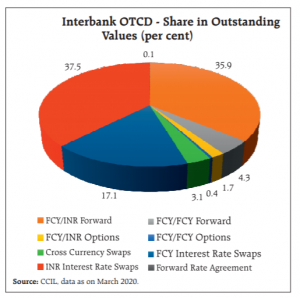The Reserve Bank of India published a study: Assessing the Future Path of Monetary Policy from Overnight Indexed Swap (OIS) Rates.
The use of the overnight indexed swap (OIS) rate as a measure of monetary policy expectation is gaining popularity in the literature. This article, by adopting the methodology of Lloyd (2018), empirically tests whether onshore OIS trades in India of different tenors (ranging from 1 month to 10 years) for the period from August 03, 1999 to May 31, 2019 are efficient measures of market participants’ expectation of short-term interest rates.

The study concluded that OIS rates in India for tenors 1, 9 and 12 months provide accurate measures of market expectations of policy repo rate. Unanticipated changes in monetary policy during 2008 and 2013 in the wake of the global financial crisis and the ‘taper tantrum’ significantly impacted ‘excess returns’ in the OIS market, unlike normal times. OIS rates in India are found to be good predictors of the direction of monetary policy, if not the exact timing of policy changes.
Key points:
- Ex post “excess return” is calculated as the difference between the OIS fixed rate and the floating overnight reference rate.
- The excess returns of the OIS trades of tenors of up to one year were low ranging between 2 basis points (bps) and 20 bps indicating that these OIS rates were, on average, a fair indication of the direction of future course of monetary policy.
- Specifically, the OIS rates of tenors 1, 9 and 12 months appear to more accurately measure the expectations of future short-term interest rates with the excess returns of these tenors, on average, being not significantly different from zero.
- Based on the findings of the study, the OIS rates in India are found to be credible predictors of the direction of monetary policy, if not the exact timing of policy changes.

